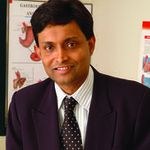








What does Pantai Hospital Kuala Lumpur offer patients?
How many specialists are there and what accreditation's have been awarded to Pantai Hospital Kuala Lumpur?
A Craniotomy is a major brain surgery where a neurosurgeon opens up the skull, removes a piece, and then restores that piece after accessing the brain. This intrusive operation is generally a course of action taken to deal with conditions like brain tumors, serious ailments, or after a brain trauma incident.
Even though a craniotomy and Craniotomy are both brain surgeries, they have different procedures. In a craniotomy, a part of your skull is removed and then restored to its original position after brain access. However, a craniectomy also involves the removal of a skull piece, but this skull piece isn't immediately returned to its place post-surgery. Instead, you may need a separate surgery termed cranioplasty that will replace the missing part of your skull.
The length of time it takes to recover from a craniotomy varies substantially depending on the patient and the particular surgery. From a few weeks to several months is possible.
Following surgery, patients frequently spend a few days in intensive care before transitioning to a standard hospital room. The length of time spent in the hospital is typically between three and seven days. It's crucial to remember that healing doesn't stop when you leave the hospital.
Recovery following discharge can be divided into phases. Patients should obtain lots of rest at first because they could feel tired and uncomfortable for the first two weeks. Following this, it may be beneficial to gradually increase daily activities like light housework and quick walks.
Patients usually begin to feel much better 4–8 weeks after surgery and may be able to resume their normal activities, however this is mostly dependent on how well they are recovering individually, the nature of their jobs, and the advise of their medical team.
After a craniotomy, the body will continue to repair for several months. In rare circumstances, a full recovery could take six months to a year or even longer.
Rehabilitation, which may involve physical, occupational, and speech therapy depending on the patient's needs, is frequently a crucial component of recovery. Following the surgeon's instructions is key for the best results throughout this recuperation phase.
The success rates of craniotomies have greatly increased over time thanks to improvements in surgical methods and technology, which are done by highly competent neurosurgeons. The success rate might vary from 70% to 95%, according to studies, depending on the particular condition being treated, the location and extent of the problem, and the patient's general state of health. For benign brain tumors, the high success rate, for instance, signifies the ability of the surgeon to totally remove the tumor while maintaining neurological function.
Because every situation is different, the healthcare team for the patient is best suited to determine the likelihood of success because they can take all of these things into account. However, the overall pattern is encouraging. Craniotomies can considerably enhance the patient's quality of life, even in more severe conditions. The success rate of craniotomies has been improved by technological advancements like real-time imaging and computer-aided navigation, which enable neurosurgeons to conduct the procedure with greater precision.














What does Pantai Hospital Kuala Lumpur offer patients?
How many specialists are there and what accreditation's have been awarded to Pantai Hospital Kuala Lumpur?
















What does Pantai Hospital Kuala Lumpur offer patients?
How many specialists are there and what accreditation's have been awarded to Pantai Hospital Kuala Lumpur?
CONTACT SUCCESSFUL